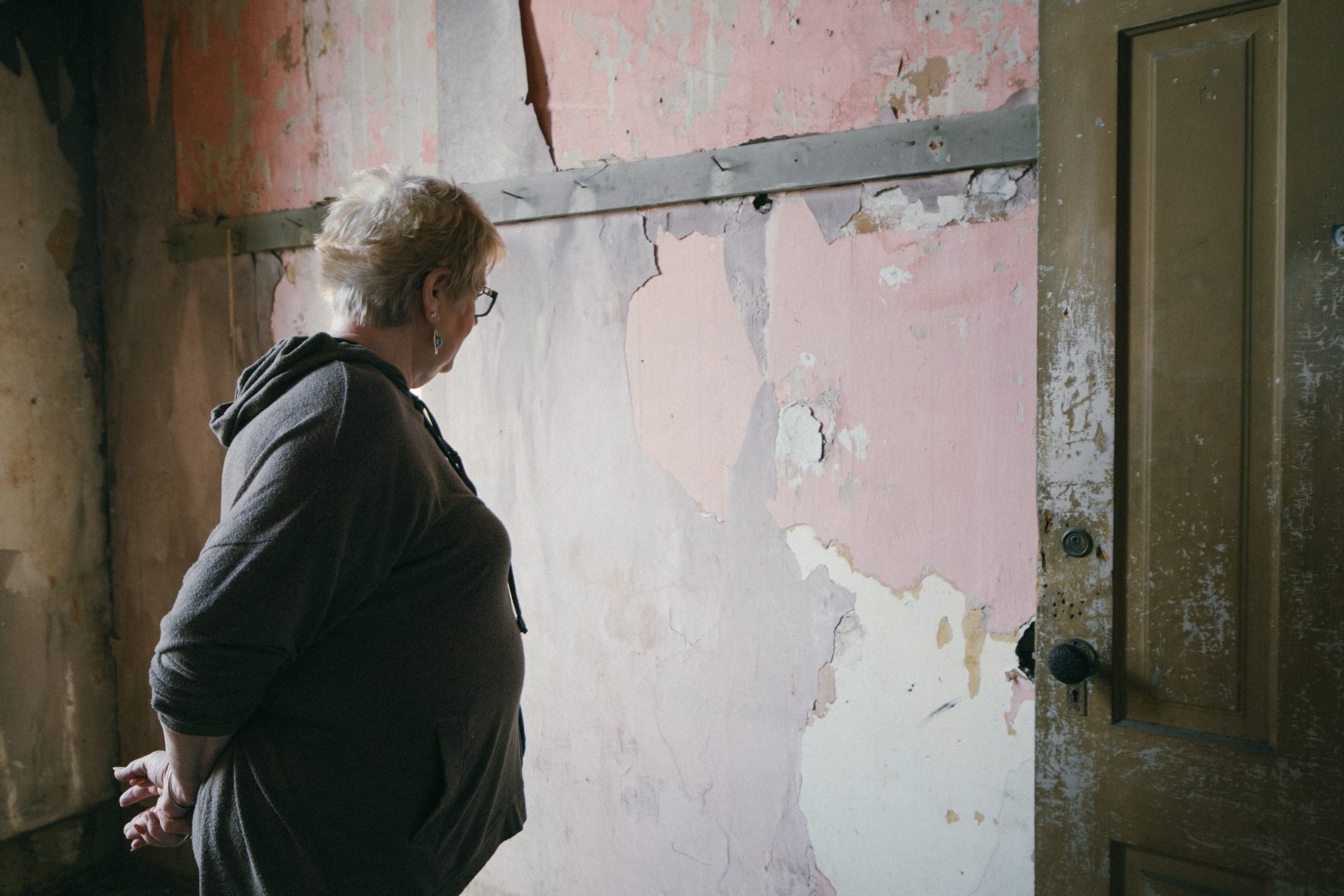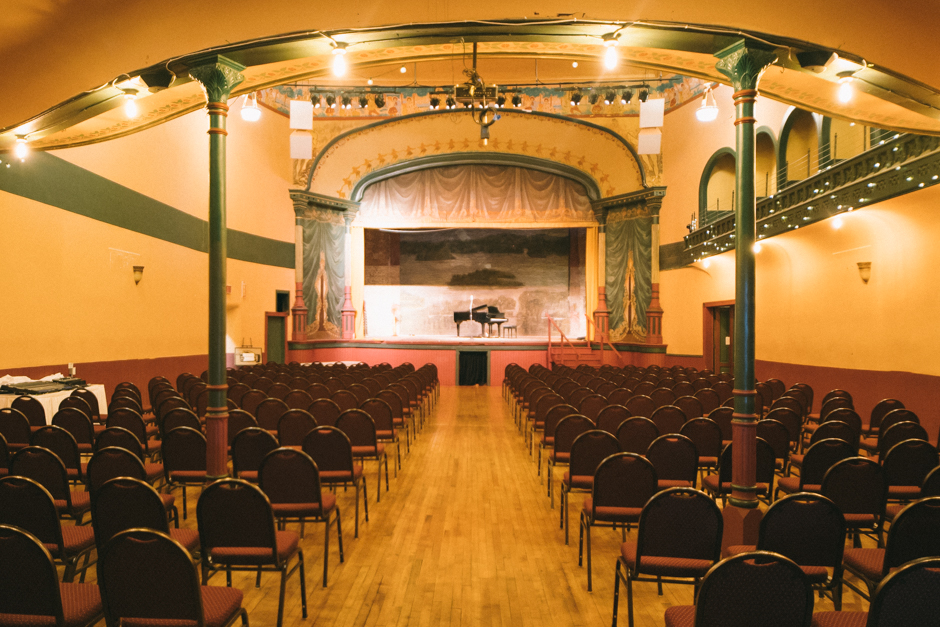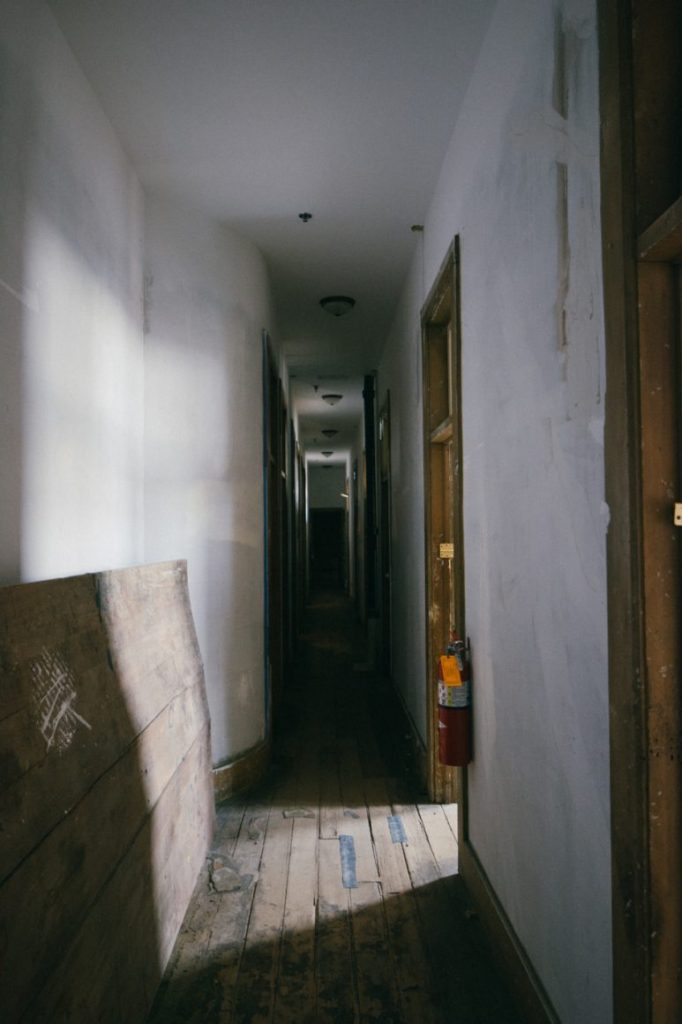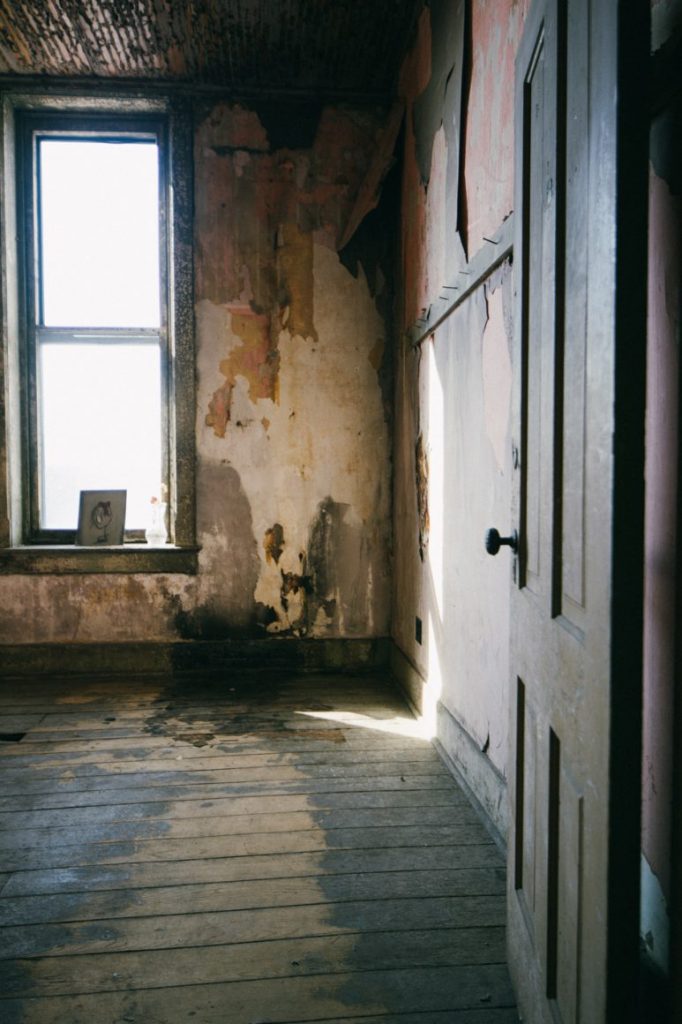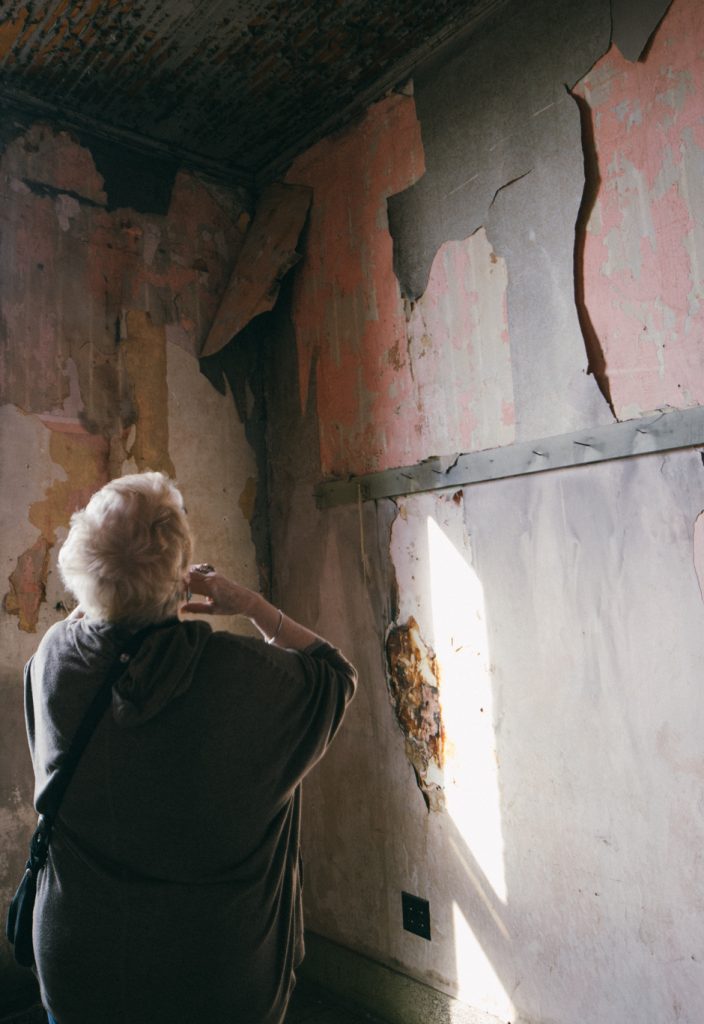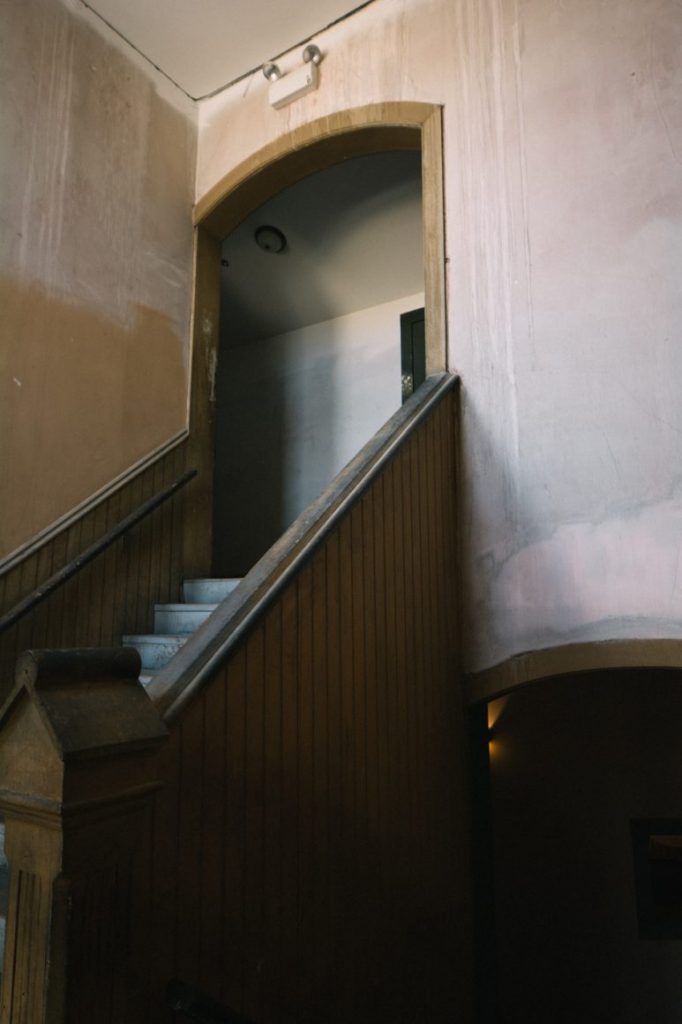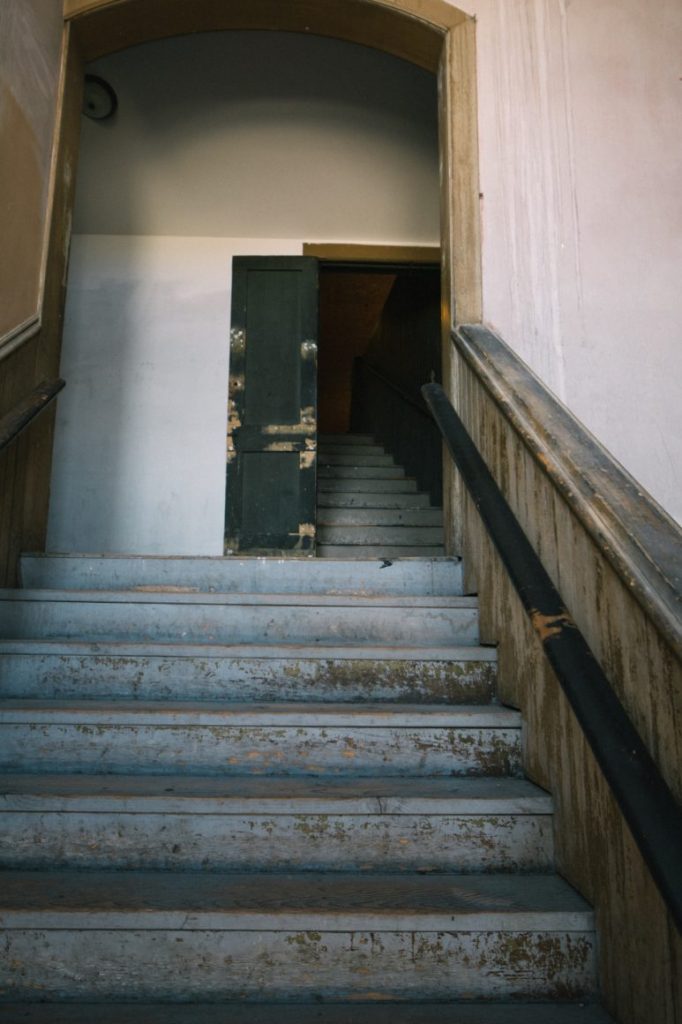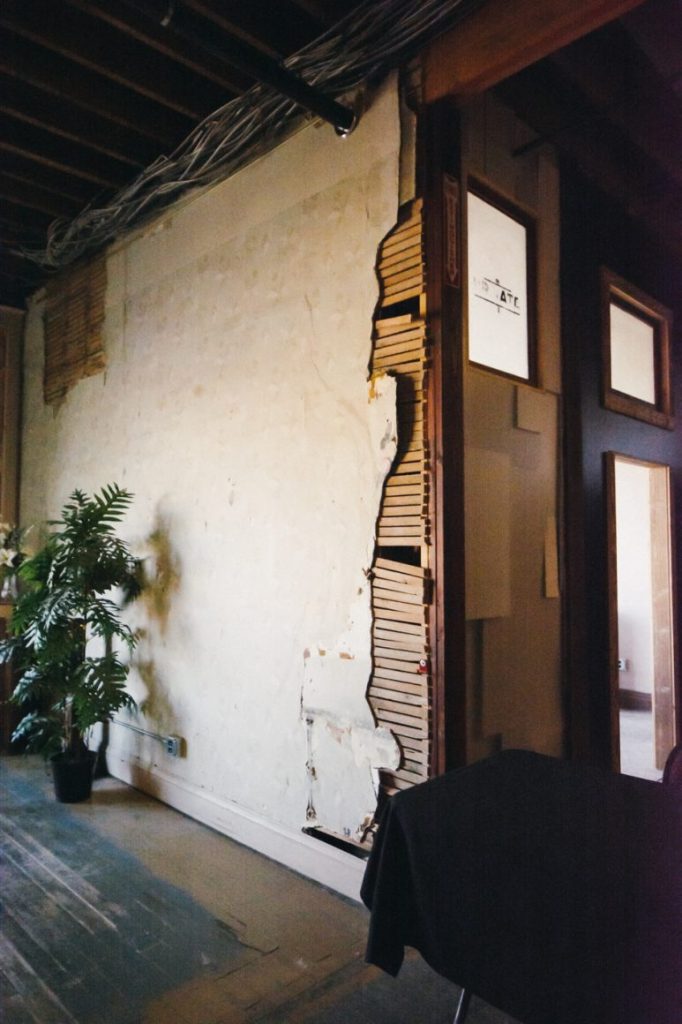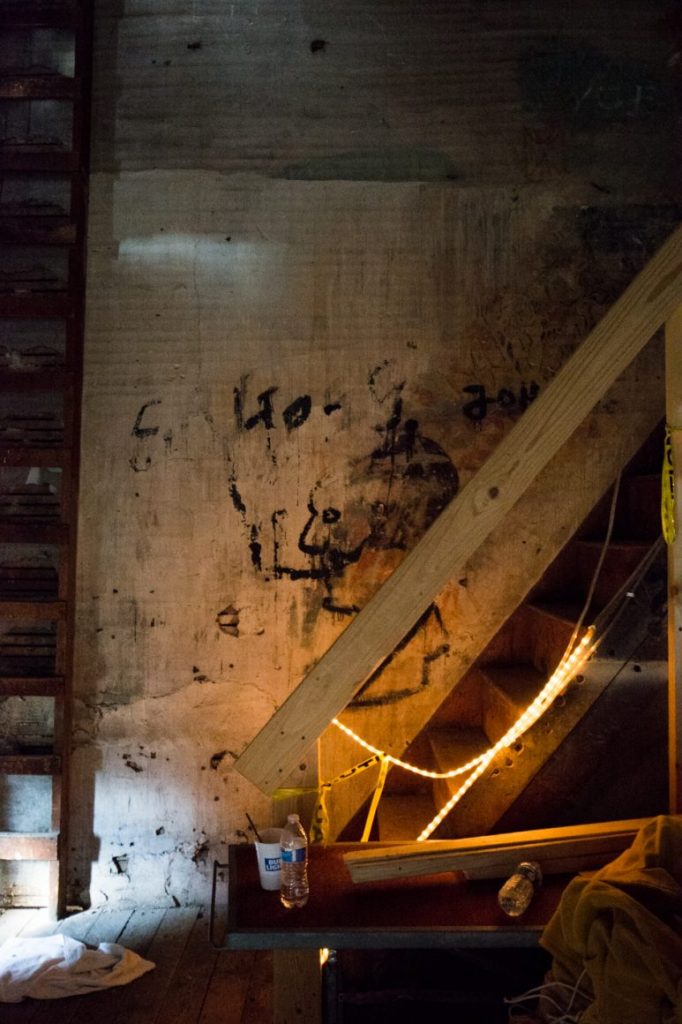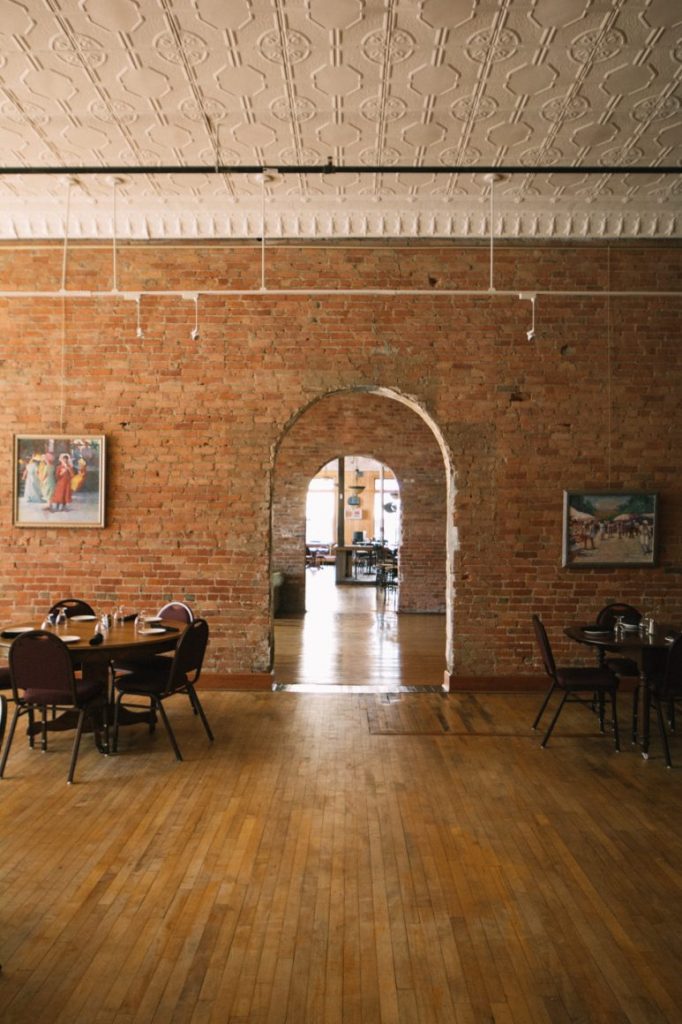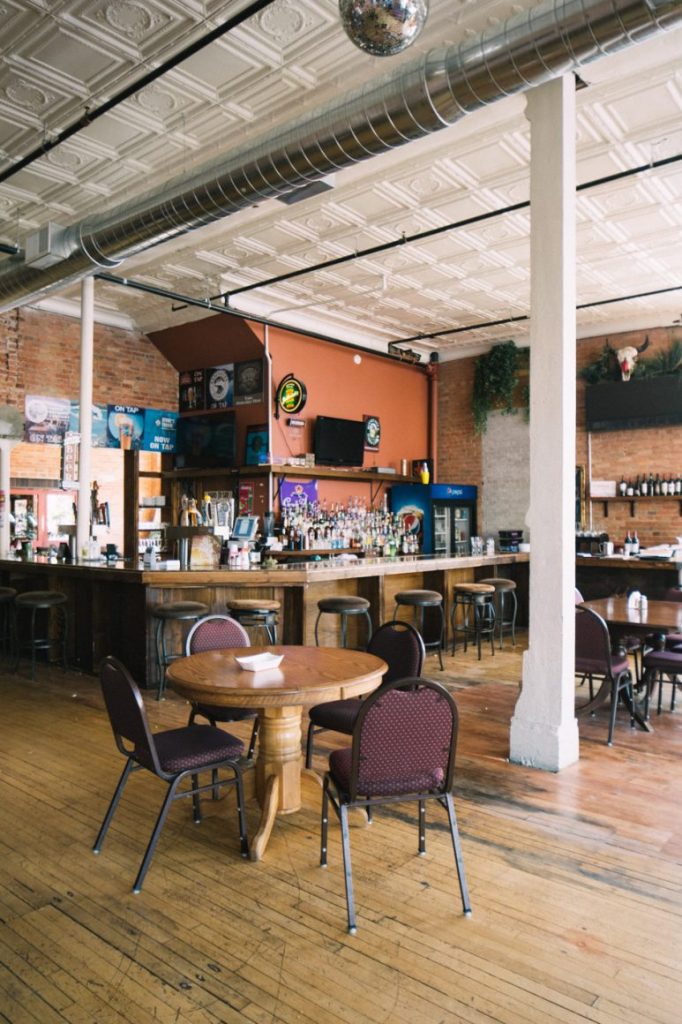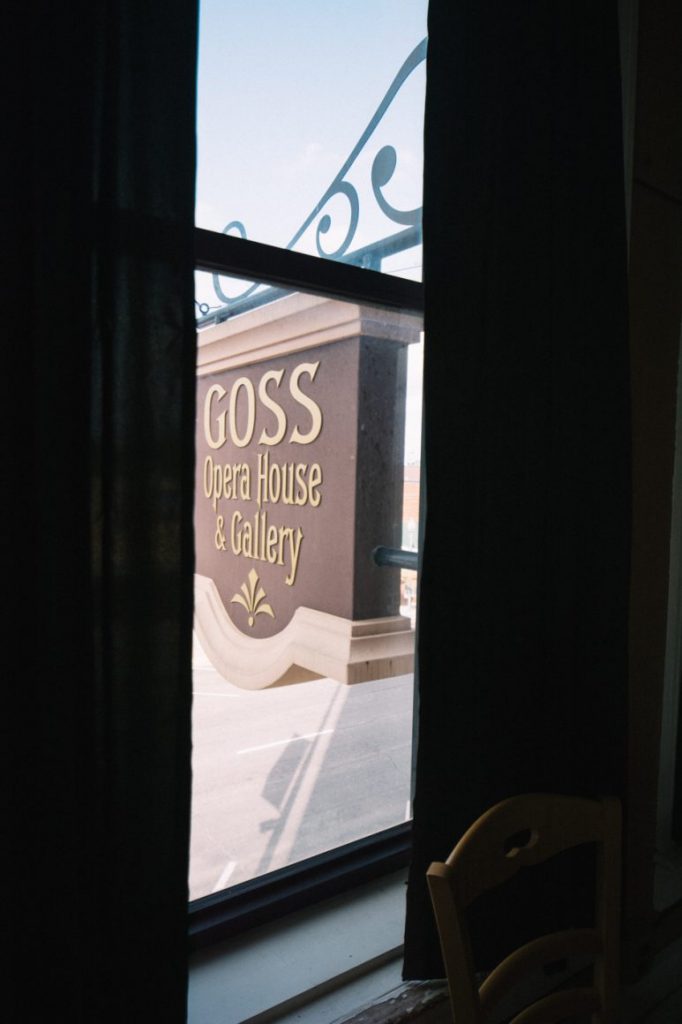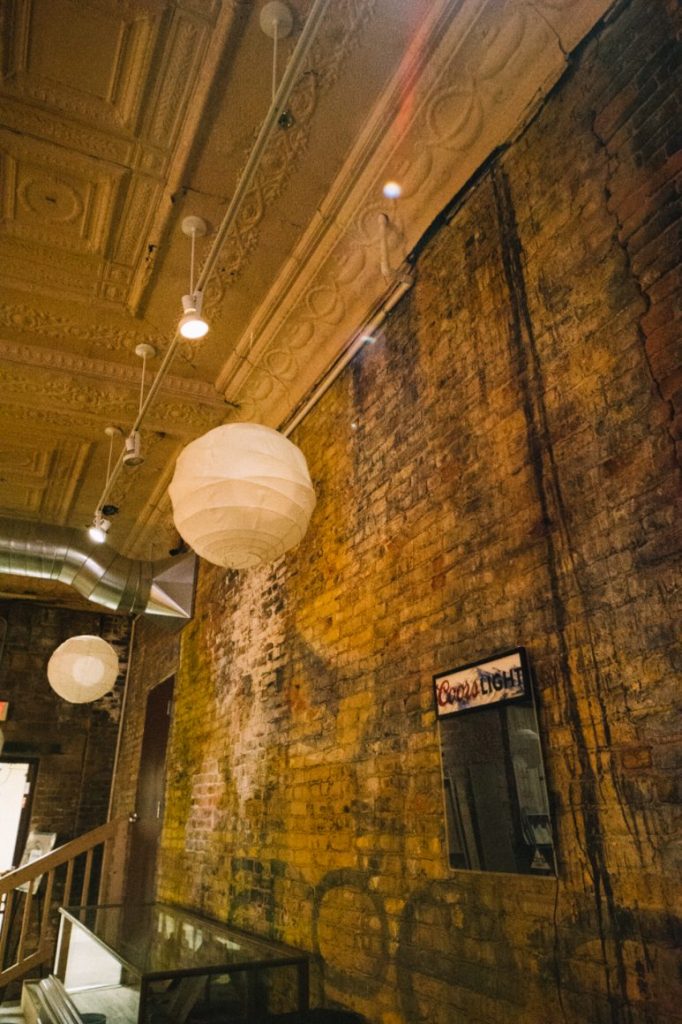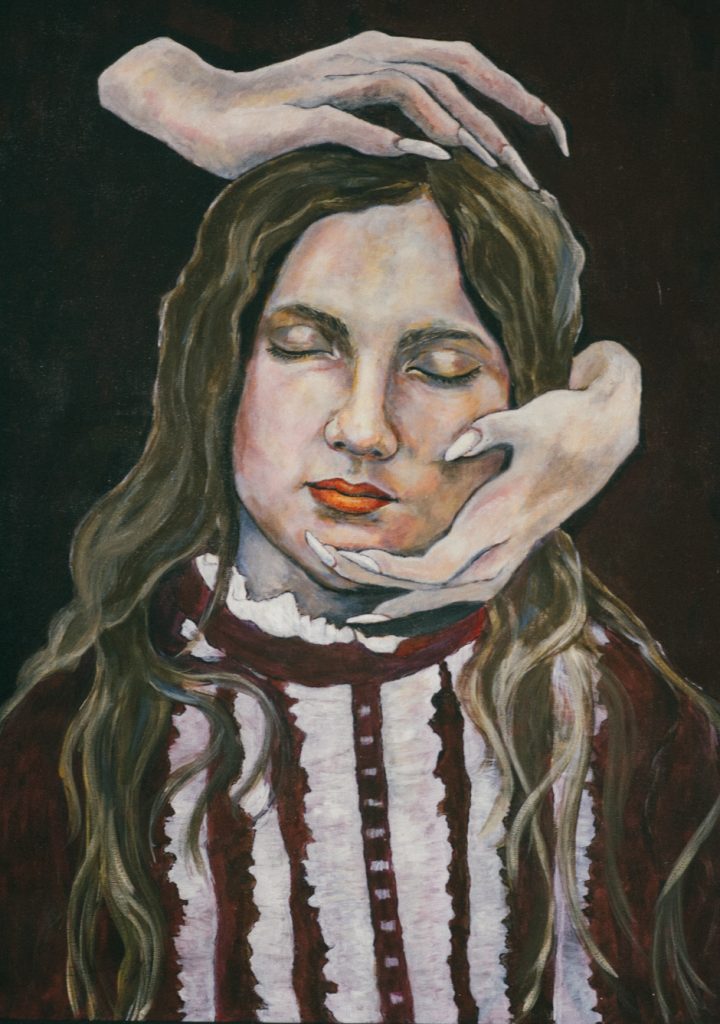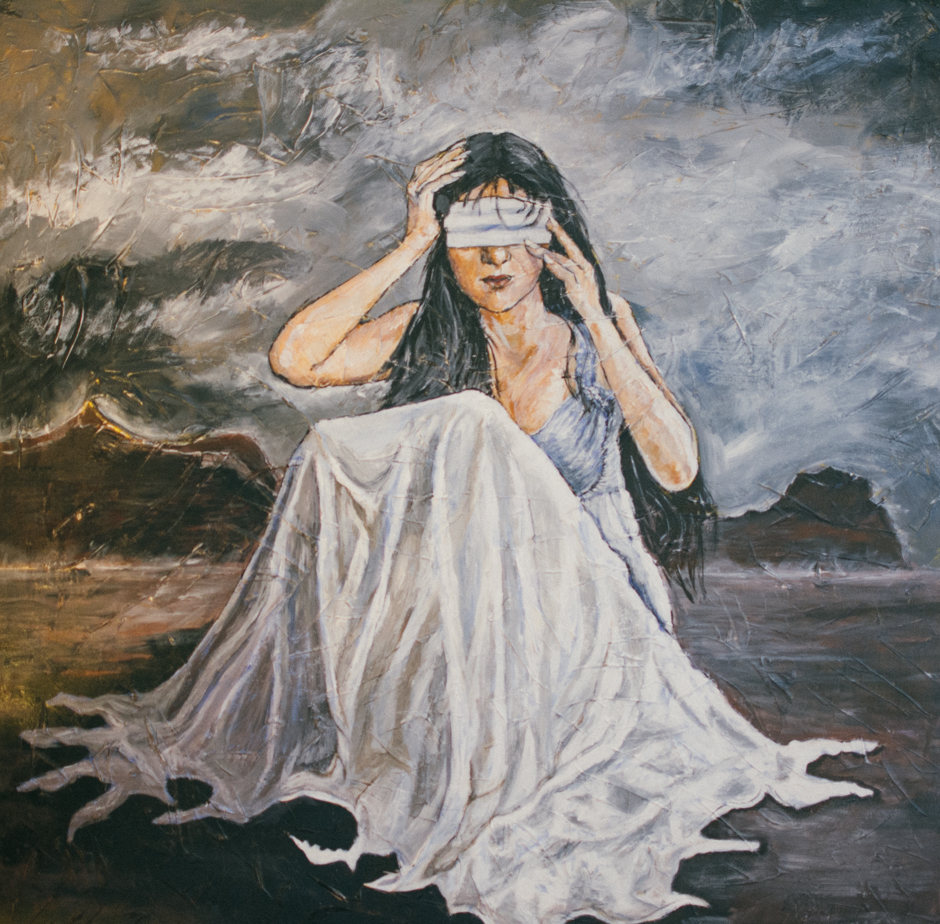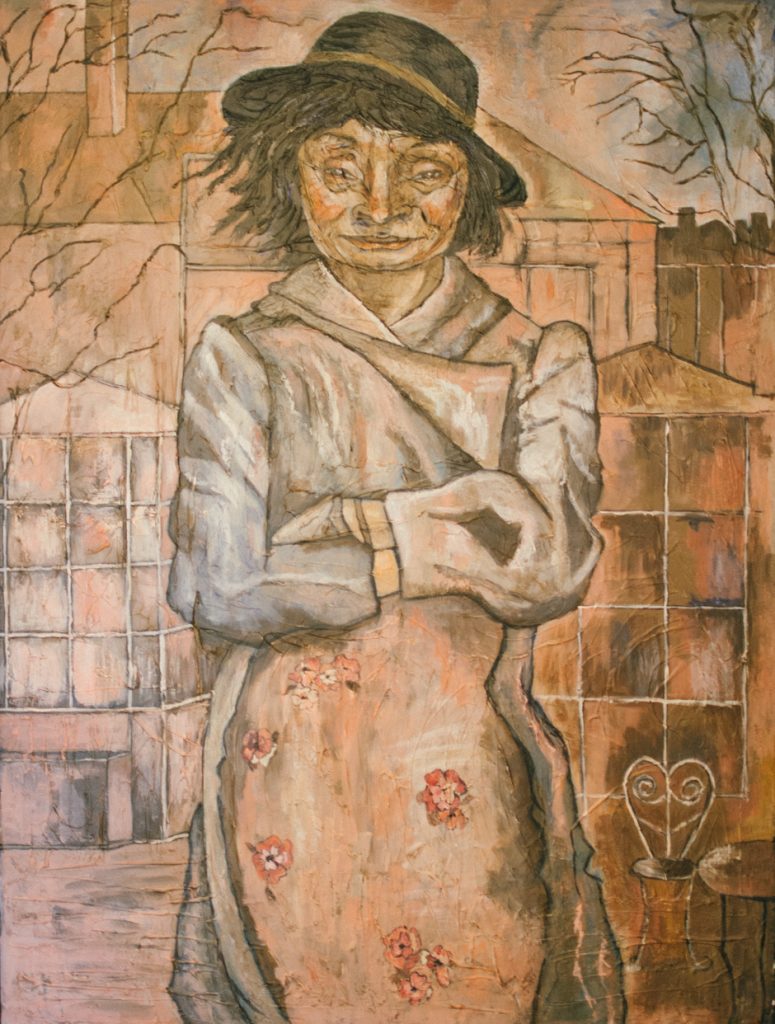Annie’s Room
“This place is just full of spirits.”
The 605 team asked Sioux Falls psychic medium Donna O’Dea if she would be willing to come with us to the historic Goss Opera House in Watertown. We had heard rumblings of “Annie’s Room,” which is a morbid tale of a woman who burned alive somewhere in the building.
“This feels like it’s had some phenomena going on in here…” -O’dea
We pulled up to the corner of Kemp and Maple Avenue in the center of downtown, and gazed up at the three-floor brick structure. Co-manager Brad Johnson was holding the door open for us at the entrance.
“We’re actually closed on Mondays, so this is perfect timing for a tour,” he said.
As we walked in, we were told about the original, rare pine floors, and saw the large canvas of John Lennon in the entry that Johnson said was painted by a street artist.
Built by Charles Goss in 1889 (the year South Dakota became a state), it was a public hall for community gatherings and entertainment.
“When it was under construction, it was great secrecy about what was being built,” said Johnson. “And when it opened, there was a lot of disappointment, because when they found out it was an opera hall it was the third opera hall at the time in Watertown. Everyone was asking, ‘What do we need another opera hall for?’”
It’s now the only remaining opera house in the area, and the 50,000 square-foot building is home to casual and fine dining, a coffee shop, a music venue, and several event spaces.
Johnson said the building was bustling until the early 1950s.
“Around the 1950s, it became practically unused, and pretty much was just mothballs until around 2007,” he said. “Since 2007, there has been over 3.5 million dollars invested in this place to bring it back to life.”
Owned by Dave Barry, Johnson took over management May 1.
According to Johnson, “It was kind of dead in the water, so we’re getting the momentum going. We have a new menu, and have some great shows and events coming up.”
“There’s a woman in here,” said O’Dea, as we all stopped in our tracks in the coffee shop. “She’s constantly wanting to tidy up.”
“We could use people like that,” laughed Johnson.
O’Dea stared at the coffee bar, and turned to Johnson.
“Don’t you hear [spirits] once in awhile?”
Johnson’s smile faded as he replied, “Various people have heard things moving around, doors closing… and the piano plays when there’s no one around.”
“Oh, but there is [someone],” said O’Dea.
After a brief moment, we continued on to the elevator. We got off on the second floor and entered the Opera Hall.
“How would you like to spend the night in here alone?” said O’Dea as she looked at me.
Johnson explained how everything on the stage is original, including the curtains and backdrop.
“Every musician that plays here says it’s the best acoustics,” he said.
The theater holds up to 450 people comfortably, and can host events and has entertainment, like the South Dakota Symphony (see event sidebar on page 36).
“What’s neat is there was never permanent seating in here, so you can easily have round tables placed in here, so people can enjoy the show and have somewhere to place their beverages,” said Johnson.
“Did men wear top hats often when it first opened?” asked O’Dea.
“They did.”
“You’ve got a man in a top hat in the Opera Hall in a chair waiting for the show to start,” she said, pointing to the last row. “And something nasty is coming from the ceiling of that stage.”
Unsure of how to react, Johnson nodded his head and suggested we continue to “Annie’s Room” on the third floor.
“Annie, I believe, was one of the traveling entertainers,” he explained as we followed. “They would bring in the entertainers by train from Minneapolis or Chicago, and then they would stay here for a week or two.”
The entire hallway facing Maple Avenue has small apartments, which are so tiny it’s hard to imagine fitting a bed, if anything, in there. Johnson said they all shared a bathroom down the hall.
“At the time, these were designed mostly for the entertainers to come and stay, because you had to put them up somewhere,” he said.
While stories vary, and a lot of information is lacking (or possibly non-existent, according the Watertown Historical Society), Johnson said that Annie was an entertainer who brought her son with her.
As he slowly pushed open door 6, O’Dea stumbled backwards with her hand to her mouth.
“Oh, I don’t like this…”
The rest of us walked in and gasped as we saw everything in tact from the alleged incident. A burn mark still appears fresh against the corner, and creeps up the wall and onto the wooden floor. O’Dea made her way into the room.
“The story is Annie had brought her son along, who was mentally disabled, and he was causing trouble,” said Johnson from the doorway. “She yelled at him, and he grabbed a kerosene lamp and threw it at her. It caught her on fire.”
O’Dea made small noises of distress as she looked at the charred wallpaper.
“The kerosene oil is still on the floor. You can still feel the oil if you touch it,” said Johnson.
Unfortunately, it sounds like death didn’t stop there.
“Supposedly, the rumor is that her son was so distraught after he realized what he did that he went elsewhere in the building and hung himself,” he continued.
“Oh my goodness… he’s the one in the opera hall,” said O’Dea, referencing the catwalk.
A portrait of Annie was sitting on the windowsill by artist Meranda Turbak, who used to worked at the Goss Opera House and had spent time in the room. Next to it was a vase of dead roses.
“A friend of mine told me to start bringing in fresh roses for her, because they used to do that before for Annie,” he said. “So we’re going to start bringing in fresh roses again.”
“You should,” said O’Dea, still staring at the wallpaper.
She pointed up, “There’s the woman that died, you can see her. It’s on the wall, you can see her looking up, and she has this maybe velvet band around her neck from her dress… and her hands are extended like she’s melting,” she continued.
Johnson talked about everyone being terrified to be the last one there at night, and explained how he brought a friend into the room that was a priest and that he felt a “complete rush” through his body.
Asking why they keep the room the way it is, he replied, “I think everybody that’s owned the building has had a reverence for it.”
“[Annie’s] still here, and she was awfully sorry for her son,” said O’Dea. “She feels so bad that he did that. Her dying thought, besides her terror, was, ‘What’s going to happen to him?’”
Suddenly, O’Dea turned and looked at Johnson.
“Ken? There’s a name Ken?”
His head shook.
“You’re sure you don’t know anyone named Ken?”
“She’s trapped in that corner.” – o’dea
“We had a [Kenneth] Way, who was a long-time publisher of the paper [the Watertown Public Opinion], and he died around 7-8 years ago,” he recalled. “I remembered when we talked about resurrecting the Goss he said, ‘Stay away from the Goss.’”
“Well he’s here, and he’s trying to help her,” said O’Dea.
She turned to art director Liz Painter and myself. “Rose… who is Rose? Do you know a woman named Rose?”
“Yeah, I know a Rose who recently passed away,” I said.
“She’s here. She’s here with Ken, and they’re trying to help Annie, but she’s so concerned about her son that I don’t think she’s going to leave.”
We asked if her son was still in the building.
“No, actually, he’s not. He’s gone on. And if she could hear us say that, that he’s okay and no one punished him, that she could go on and meet him, then maybe she would go,” she said. “She’s trapped in the pain and fear. She was afraid he was going to be hanged… Oh my God, and that’s what he did, isn’t it? He’s fine, he’s gone to the light, Rose and Ken can tell her. They know.”
After a few silent minutes, O’Dea spoke again.
“Ugh, I’m just getting chills. She’s being helped, we can move on, but so far she can’t move from her turmoil and fear.”
We made our way out of the room that carried so much heaviness and headed to the third floor banquet hall. Paper lanterns hung from the ceiling, and Johnson showed us a display case in the room that has items found during the renovations, like a wallet, liquor bottles, and instruments.
I turned to O’Dea and asked why the man in the top hat is stuck waiting for a show.
“The problem with him is that he’s stuck in that mindset, so for him [the performance] will never start, which is too bad,” she said. “Maybe that’s purgatory?”
Then why, I asked, is the woman stuck cleaning in the coffeehouse? Is it her mindset?
“I think she was a housekeeper, or something like that, and she takes her job very seriously,” she said. “She’s more aware of herself than the man in the Opera Hall.”
Painter went to go take more images of the stage, and Johnson took us into a smaller room where they will have model trains displayed over the holidays.
As we walked back out to the banquet room, I was getting texts from Painter asking where we went, and she mentioned the automatic lights were off when she came back in looking for us.
“To me, it honestly does feel like the building breathes,” said O’Dea with her hand to her chest.
I asked how that works for her when there are so many spirits in one place.
“I can just feel them all. Some of them can see us, some of them can’t. Some of them are stuck in time, like the gentleman in the top hat, and some of them are just visiting,” she said. “They just like it, and maybe they performed here and they come back. When you start remodeling a place it really wakes them up. That’s when they get really, really active. This building is always going to have lots of… do you ever see those lights swing?”
She pointed at one of the hanging lanterns.
“Yeah,” said Johnson.
“There’s a spirit trying to swing [that lantern] right now,” she said. “They can’t quite muster up the energy to get it, but it’s trying.”
Painter came in flustered and told Johnson what had happened.
“The lights are on a 10-minute timer. That’s not possible the lights were off,” he said.
Getting chills, we ended our tour by looking at the original entrance, which is now blocked off.
After thanking Johnson for his time, I ran to the restroom quickly, so we could hop back on the road (O’Dea and Painter were smart and used it when we arrived).
I opened the door and saw a silver necklace in the middle of the floor.
Back in the car, we chatted about what had occurred during our walk-through. O’Dea mentioned she saw some popcorn on the floor and a couple beer cans from an event the week prior around the venue.
“Yeah, they hadn’t gotten around to cleaning yet, because there was even that necklace in the bathroom still, which was random,” I said.
O’Dea and Painter looked at each other.
“Did you see a necklace?” asked Painter. “I didn’t see a necklace.”
“No… there was not a necklace in there,” confirmed O’Dea.
We all stared at each other in the rearview mirror in silence.
For more information on the Goss Opera House, visit thegossoperahouse.com.
O'Dea's passion Project
After feeling more constricted with her new Pacemaker four years ago, o’dea discovered her love for painting. “It makes me feel alive,” she said. some of her works can be found occasionally at eastbank art gallery & studio. o’dea shared a few of her pieces from her home collection.
THE SOUL STEALER
“It’s actually about narcissists and how they manipulate people and steal their souls because they don’t have their own. A lucky person understands what’s happening and gets away from it, but it’s hard when it’s a child,” said O’Dea. “Conversely, other people look at that painting and see those hands as very soothing and comforting, so I guess it’s really up to the interpretation to the viewer.”
THE WASHER WOMAN
“In Celtic mythology, she sits by the river and washes her clothes and comes out at night,” explained O’Dea. “One night, it was pouring rain and my daughter looked out the window, and here was this woman sitting on the curb soaking wet in a white dress looking up at her. So I just painted that. I think our mythologies really run in our heritage, but whatever caused that is interesting.”
STREET WOMAN
“I saw her outside of Shriver’s [Square]. She was sitting on the table, and she had her feet on the chair. She was dressed very warm on a nice day with a coat, hat and gloves. It appeared she was homeless and potentially mentally ill, and she was very friendly,” said O’Dea. “She asked me if I knew Virginia and was waiting for her friend. I told her if I saw her I would tell her she was looking for her. She just struck me as such a beautiful human being and so important to Sioux Falls and to the energy of the city.”
What's the ``Goss``?
Save the Date for Goss Events:
Oct. 11 Sherwin Linton Unplugged 7 p.m.
Oct. 14 Rocky Horror Picture Show 7 p.m.
Nov. 8 Sherwin Linton Unplugged 7 p.m.
Nov. 10 Surfin Safari 7:30 p.m.
Nov. 11 SD Chamber Voices of Watertown 7 p.m.
Nov. 17 LATI Festival of Trees After Party 9 p.m.
Nov. 18 Spirit of the American Cowboy 7 p.m.
Dec. 1 Sherwin Linton Christmas 7 p.m.
Dec. 13 One Last Christmas (Albert & Gage) 7 p.m.
Join Friends of the Goss
Become a supporter with a donation to the Friends of the Goss Foundation to continue the historic preservation.
Donor Levels
Executive Producers $5,000+
Producer $2,500-$4,999
Director $1,000-$2,499
Conductor $500-$999
Choreographer $250-$499
Stage Member $100-249
For more information, call (605) 878-4677.


